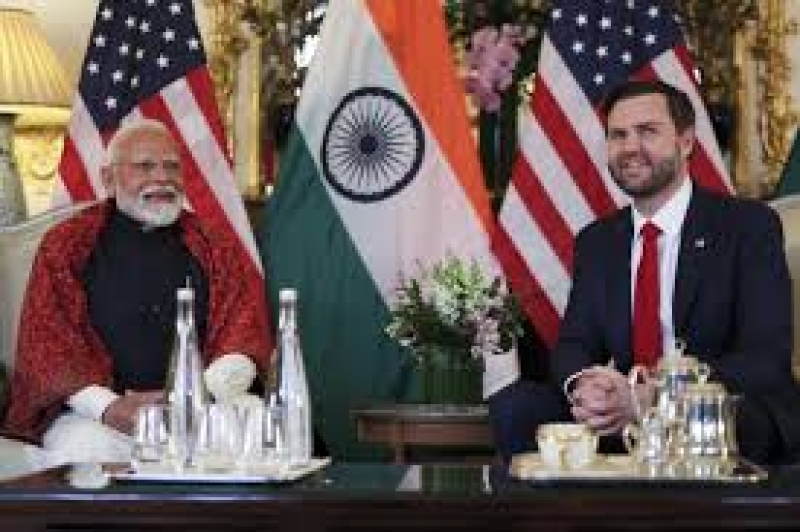- CA Yunus pays homage to Liberation War martyrs on Victory Day |
- Bangladesh capital market extends losing streak for second day |
- Bangladesh celebrates Victory Day Tuesday |
- 'Different govts presented history based on their own ideologies': JU VC |
US Vice President Begins 4-Day India Visit for Personal, Trade Talks

US Vice President JD Vance landed in India on Monday on a four-day trip, during which he will attend personal engagements and hold discussions focused on trade, as India aims to avoid U.S. tariffs, pursue a bilateral trade deal with Washington, and deepen its relationship with the Trump administration.
On the first day of his primarily personal visit, Vance is scheduled to meet with Prime Minister Narendra Modi. Their talks are expected to cover bilateral relations, following up on the agenda set during Modi’s February meeting with President Donald Trump in Washington.
India and the United States, which is New Delhi’s top trading partner, are currently engaged in talks aimed at finalizing a bilateral trade agreement within the year. Both countries have set an ambitious goal to more than double their trade to $500 billion by 2030—a move that could significantly enhance economic cooperation and strengthen diplomatic relations.
Vance’s inaugural trip to New Delhi comes at a time when Trump's tariff measures against several countries, including India, are on pause. It also takes place against the backdrop of an escalating trade conflict between Washington and Beijing, India’s key regional competitor.
“We are very positive that the visit will give a further boost to our bilateral ties,” Indian Foreign Ministry spokesperson Randhir Jaiswal said last week.
Upon arriving at New Delhi’s Palam airport on Monday—after a visit to Rome where he met Pope Francis on Easter Sunday—Vance was welcomed with a traditional Indian classical dance performance. He is traveling with his wife, Usha Vance, whose parents are originally from India, their children, and members of the U.S. administration. The couple is also set to tour historic sites in Jaipur and Agra.
India remains a key strategic partner for the United States, especially in efforts to counter China’s growing influence in the Indo-Pacific region. The country is also a member of the Quad—alongside the U.S., Japan, and Australia—which is widely viewed as a regional counterweight to China’s ambitions. Trump is expected to attend a Quad leaders’ summit in India later this year.
Modi cultivated a strong working relationship with Trump during his first term and is expected to continue deepening collaboration with the U.S.
He was among the earliest leaders to visit Washington and engage with Trump following his return to the presidency. During that trip, Modi lauded the U.S.-India “mega partnership” and launched negotiations aimed at minimizing the impact of Trump’s tariff measures.
The two leaders also expressed a shared interest in expanding defense cooperation. India has indicated its willingness to align with U.S. priorities by pledging to increase purchases of American oil, energy, and defense equipment.
Nevertheless, Trump imposed a 26% tariff on India—currently on hold—and has continued to label India a “tariff abuser” and the “tariff king.”
New Delhi is especially eager to conclude trade negotiations, as the country stands to be significantly affected by potential reciprocal tariffs from the Trump administration, particularly in sectors such as agriculture, processed foods, auto parts, advanced machinery, medical equipment, and jewelry, reports UNB.

